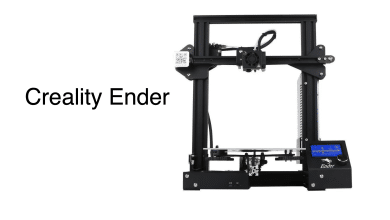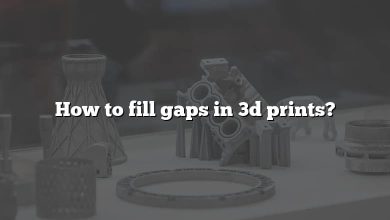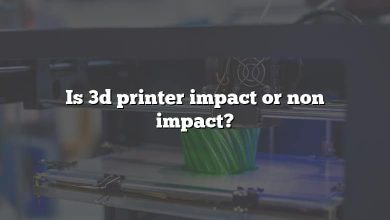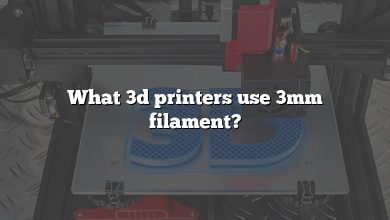The financial industry has always been at the forefront of technological advancements, and the advent of 3D printing and computer-aided design (CAD) is no exception. This groundbreaking combination of technologies is revolutionizing the way financial institutions operate, providing numerous benefits such as cost savings, enhanced efficiency, and improved customer experiences. In this article, we will explore the ways in which 3D printing and CAD are disrupting the financial industry and transforming its landscape.
3D Printing and CAD: A Powerful Duo
What is 3D Printing?
3D printing, also known as additive manufacturing, is a process of creating three-dimensional objects from a digital model. It involves layering materials, such as plastics, metals, or ceramics, to build objects layer by layer. 3D printing offers unprecedented flexibility in manufacturing, allowing for the creation of complex and customized objects that would be challenging or costly to produce using traditional manufacturing methods.
Understanding CAD
Computer-aided design (CAD) is the use of computer software to create, modify, analyze, and optimize designs. CAD enables designers to develop detailed virtual models of objects, which can then be translated into physical prototypes or directly sent to 3D printers for production. CAD software provides advanced tools and functionalities, facilitating the design process and allowing for precise control over every aspect of the object being created.
Disrupting Traditional Banking Operations
Cost Reduction
One of the primary ways 3D printing and CAD are disrupting the financial industry is through significant cost reductions. Traditional banking operations often involve the production of physical documents, such as credit cards, debit cards, and account statements. With 3D printing, these documents can be created in-house, eliminating the need for outsourcing or relying on third-party suppliers. By leveraging CAD, banks can design and produce these items quickly and efficiently, resulting in substantial cost savings.
Enhanced Security Measures
3D printing and CAD also offer improved security measures for financial institutions. With the ability to produce customized security features, such as unique card designs or embedded identification markers, 3D printing helps prevent counterfeiting and fraud. CAD software allows banks to incorporate intricate security elements into their designs, making it increasingly challenging for criminals to replicate or tamper with sensitive financial documents.
Streamlined Customer Experience
The integration of 3D printing and CAD technology has the potential to revolutionize the customer experience within the financial industry. By leveraging these technologies, banks can offer personalized and on-demand products to their customers. For instance, customers can have customized bank cards printed in the branch, enabling them to express their individuality and preferences. Furthermore, 3D printing allows for rapid prototyping of new financial products, enabling banks to gather customer feedback quickly and iterate on their offerings, resulting in a more tailored and satisfying experience for customers.
Disrupting Investment Management
Prototype Development
In the field of investment management, 3D printing and CAD are transforming the way prototypes are developed. Traditionally, creating prototypes for investment products or financial models required extensive time and resources. However, with the aid of 3D printing and CAD, the process becomes faster and more cost-effective. Financial analysts and fund managers can now use CAD software to design and refine their investment models, producing accurate physical prototypes in a matter of hours or days. This rapid prototyping capability enables faster experimentation and iteration, leading to more informed investment decisions.
Customized Financial Instruments
Another significant disruption caused by 3D printing and CAD in investment management is the ability to create customized financial instruments. CAD software allows for the precise design and fabrication of complex investment structures, such as derivatives or structured products, tailored to meet specific investor requirements. This customization not only enables investors to gain exposure to unique investment strategies but also provides more flexibility in managing risks and returns.
Advancements in Financial Research
The integration of 3D printing and CAD technology in the financial industry has also paved the way for advancements in financial research. Researchers can leverage 3D printing to create physical representations of complex financial models, making it easier to visualize and analyze data. CAD software aids in the design and simulation of financial scenarios, enabling researchers to explore various investment strategies and assess their potential outcomes. These tools enhance the accuracy and efficiency of financial research, leading to more robust insights and better-informed decision-making.
Disrupting Insurance Operations
Claims Processing
In the insurance sector, 3D printing and CAD have the potential to streamline claims processing. By utilizing 3D scanning technology, damaged objects or properties can be accurately captured and converted into digital models. Insurance adjusters can then use CAD software to assess the extent of the damage and generate precise repair estimates. This process reduces manual inspections and speeds up claim settlements, resulting in improved customer satisfaction and reduced costs for insurance companies.
Risk Assessment and Underwriting
3D printing and CAD also contribute to more accurate risk assessment and underwriting processes in insurance. With CAD software, insurers can create detailed models of insured properties, allowing for comprehensive analysis of potential risks. By incorporating data from sensors, drones, and other sources, insurers can simulate different scenarios and evaluate the impact of natural disasters or accidents on insured assets. This data-driven approach enhances risk management practices and enables more accurate pricing of insurance policies.
Future Implications and Challenges
While the integration of 3D printing and CAD technology in the financial industry brings about numerous benefits, it also presents some challenges and considerations for the future.
Regulatory Frameworks and Standards
As 3D printing and CAD become more prevalent in the financial industry, regulators will need to develop frameworks and standards to ensure compliance, security, and consumer protection. Clear guidelines will be necessary to address issues such as intellectual property rights, quality control, and the certification of 3D printing materials. Financial institutions and industry stakeholders will need to collaborate closely with regulatory bodies to establish a robust framework that fosters innovation while maintaining trust and integrity in the financial system.
Data Security and Privacy
With the increased use of 3D printing and CAD in financial operations, data security and privacy become critical considerations. Financial institutions must implement stringent security measures to protect sensitive customer information and intellectual property associated with 3D printing designs. Encryption, secure networks, and strict access controls will be essential to mitigate the risks of data breaches or unauthorized access. Moreover, privacy regulations, such as the General Data Protection Regulation (GDPR), will need to be adhered to when handling customer data in the context of 3D printing and CAD applications.
Skills and Talent Development
The adoption of 3D printing and CAD technology requires a skilled workforce capable of leveraging these tools effectively. Financial institutions will need to invest in training and development programs to ensure that their employees possess the necessary skills in design, engineering, and technology. Collaboration with educational institutions and industry associations can help facilitate the development of specialized courses and certifications to meet the demand for skilled professionals in this emerging field.
Ethical Considerations
As 3D printing capabilities continue to expand, ethical considerations must be taken into account. For instance, financial institutions should consider the responsible use of 3D printing technology to avoid potential misuse or harm. Ensuring transparency and accountability in the design and production of financial products is crucial to maintaining consumer trust and upholding ethical standards.
Frequently Asked Questions (FAQ)
1. How does 3D printing benefit the financial industry?
3D printing benefits the financial industry by providing cost savings through in-house production, enhanced security measures with customized features, and improved customer experiences with personalized products and rapid prototyping.
2. What role does CAD play in 3D printing for finance?
CAD software plays a crucial role in 3D printing for finance by enabling the creation, modification, and optimization of digital designs. It allows financial institutions to precisely control every aspect of the objects being printed and facilitates the efficient translation of virtual models into physical prototypes or final products.
3. How can 3D printing and CAD disrupt traditional banking operations?
3D printing and CAD disrupt traditional banking operations by reducing costs through in-house production of physical documents, enhancing security measures with unique designs and embedded markers, and improving the customer experience by offering customized and on-demand products.
4. In investment management, how do 3D printing and CAD impact prototype development?
3D printing and CAD impact prototype development in investment management by accelerating the process, making it more cost-effective, and enabling financial analysts and fund managers to design and refine their investment models quickly. This rapid prototyping capability allows for faster experimentation and iteration, leading to better-informed investment decisions.
5. What are the benefits of using 3D printing and CAD for customized financial instruments?
The use of 3D printing and CAD for customized financial instruments provides investors with unique investment strategies and greater flexibility in managing risks and returns. CAD software allows for precise design and fabrication, tailoring investment structures to meet specific investor requirements.
6. How can 3D printing and CAD streamline claims processing in the insurance industry?
3D printing and CAD streamline claims processing in the insurance industry by using 3D scanning technology to accurately capture damaged objects or properties. CAD software then helps assess the extent of damage and generate precise repair estimates, reducing manual inspections and expediting claim settlements.
7. What future implications and challenges are associated with 3D printing and CAD in finance?
Future implications and challenges associated with 3D printing and CAD in finance include the development of regulatory frameworks and standards, ensuring data security and privacy, investing in skills and talent development, and addressing ethical considerations to promote responsible use of the technology. Financial institutions need to adapt and navigate these challenges to harness the full potential of 3D printing and CAD in the financial industry.
Conclusion
The convergence of 3D printing and CAD technology is revolutionizing the financial industry, disrupting traditional operations, and unlocking new possibilities. From cost reductions and enhanced security measures to streamlined customer experiences and improved investment management, the benefits of these technologies are far-reaching. However, financial institutions must also address challenges such as regulatory frameworks, data security, talent development, and ethical considerations.
By embracing the power of 3D printing and CAD, financial institutions can position themselves at the forefront of innovation, drive operational efficiencies, and deliver enhanced value to their customers. The continuous evolution and advancement of these technologies will shape the future of the financial industry, and it is crucial for organizations to stay informed, adaptable, and proactive in leveraging these disruptive tools for sustainable growth and success.





